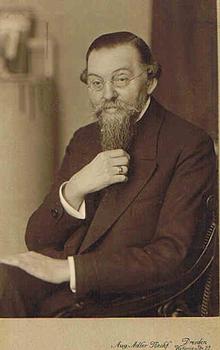German civil engineer and educator.
Biographical Information
| Name: | Georg Christoph Mehrtens |
|---|---|
| Born on | 31 May 1843 in Bremerhaven, Bremen, Germany, Europe |
| Deceased on | 9 January 1917 in Dresden, Saxony, Germany, Europe |
Short Biography of Georg Mehrtens
At the age of 18, Mehrtens started studying at Hannover TH. From 1867 to 1894 he worked primarily for Prussian State Railways. In addition, during the early 1880s he was employed as Emil Winkler’s assistant and as a private lecturer at Berlin TH; he also came into contact with Schwedler in Berlin. The highlight of his structural engineering career was supervising the Technical Office of the Royal Railways Department in Bromberg for the building of new bridges over the Weichsel at Dirschau and Nogat near Marienburg (1888–94). During the building of the Weichsel bridges, Mehrtens was able to avoid wrought iron completely and use mild steel exclusively, half in Martin steel and – the first time in bridge-building – half in basic Bessemer (Thomas) steel. He thus became the leading bridge-builder in Kaiser Wilhelm’s reign. In 1894 he was approached by Aachen RWTH and one year later by Dresden TH, where he lectured in bridge-building and theory of structures until 1913, and – after the departure of Otto Mohr – strength of materials as well. His Vorlesungen über Statik der Baukonstruktionen und Festigkeitslehre formed the first modern textbook of theory of structures in the consolidation period. It was in this book that he developed the first ideas about a systematic history of structural theory. But his articles on the history of bridge-building, which comply with the scientific criteria for writings on the history of science and engineering (as promoted primarily by Conrad Matschoß in the first decade of the 20th century), are even more important.
Main Contributions to Structural Analysis
- Der deutsche Brückenbau im XIX. Jahrhundert. Denkschrift bei Gelegenheit der Weltausstellung 1900 in Paris [1900];
- Vorlesungen über Statik der Baukonstruktionen und Festigkeitslehre [1903–05];
- Eisenbrückenbau [1908]
Source: Kurrer, Karl-Eugen The History of the Theory of Structures, Wilhelm Ernst & Sohn Verlag für Architektur und technische Wissenschaften GmbH, Berlin (Deutschland), ISBN 3-433-01838-3, 2008; p. 748
Structures and Projects
Participation in the following structures & large-scale projects:
Relevant Publications
- (1997): Erinnerung an Georg Christoph Mehrtens (1843-1917). In: Bautechnik, v. 74, n. 2 (February 1997), pp. 117-120.
- (2017): Georg Christoph Mehrtens (1843-1917): Protagonist des Stahlbrückenbaus im wilhelminischen Deutschland. In: Stahlbau, v. 86, n. 6 (May 2017), pp. 527-547.
- (2017): Georg Christoph Mehrtens (1843–1917): Protagonist des Stahlbrückenbaus im wilhelminischen Deutschland. Presented at: 27. Dresdner Brückenbausymposium, Dresden, 13./14. März 2017, pp. 81-102.
- (2002): Geschichte der Baustatik. Wilhelm Ernst & Sohn Verlag für Architektur und technische Wissenschaften GmbH, Berlin (Germany), pp. 480.
- (2008): The History of the Theory of Structures. From Arch Analysis to Computational Mechanics. 1st edition, Wilhelm Ernst & Sohn Verlag für Architektur und technische Wissenschaften GmbH, Berlin (Germany), ISBN 978-3-433-01838-5, pp. 748.
- About this
data sheet - Person-ID
1002515 - Published on:
03/03/2003 - Last updated on:
22/07/2014




